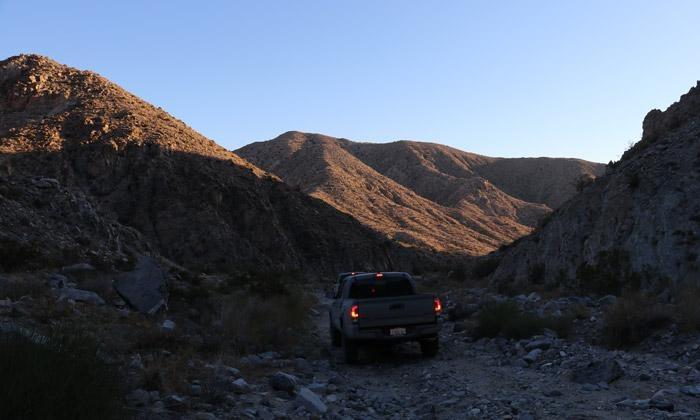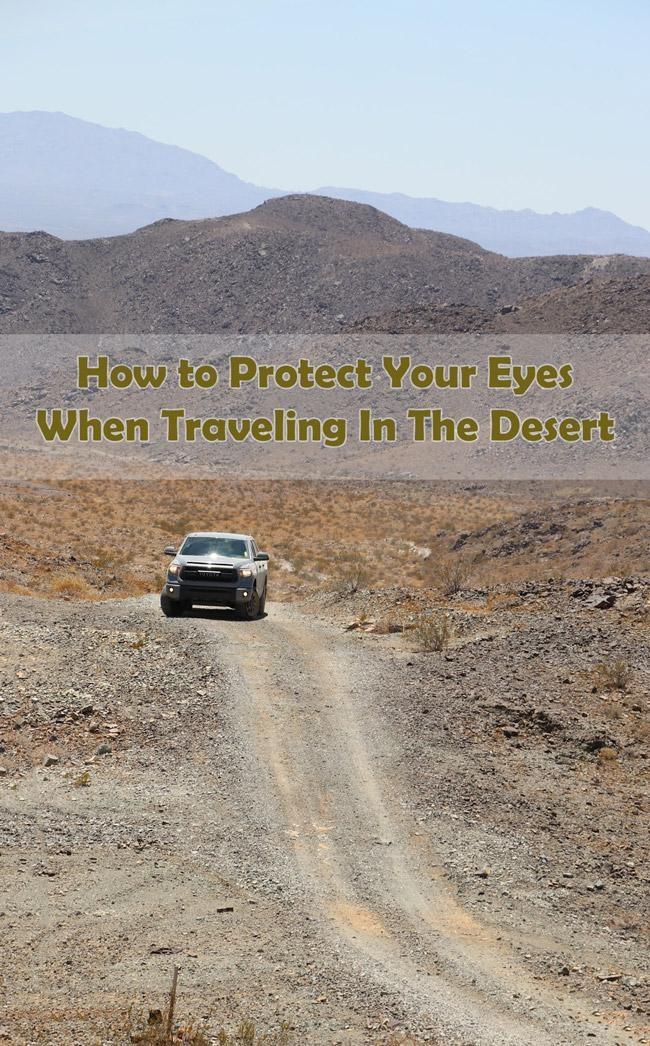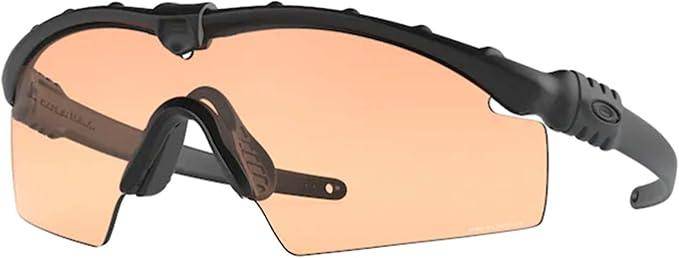Desert adventures test every aspect of your preparation, but eye protection often gets overlooked until it's too late. After logging thousands of miles across the American Southwest's harshest terrain, I've learned that proper eye care separates successful expeditions from miserable experiences that end in permanent damage.
What Do You Call Your "Guys Trips"?
- Professional-grade protection prevents irreversible UV damage that accumulates with each unprotected exposure
- Proper hydration protocols maintain visual acuity and reaction times critical for navigation and safety decisions
- Quality gear investment pays dividends across multiple adventure seasons rather than replacing cheap equipment
- Environmental awareness techniques help you anticipate and avoid the most dangerous exposure periods
- Post-expedition care ensures your vision stays sharp for future adventures and professional demands
- Military-Grade Eye Armor: Why Standard Sunglasses Fail in Extreme Heat
- The Desert Dehydration Threat: Advanced Moisture Management Protocols
- Reading the Desert's Deadly Light Patterns and Dust Dynamics
- Combat Nutrition: Foods That Bulletproof Your Vision Against UV Assault
- Post-Expedition Recovery: Damage Assessment and Vision Restoration
- Investment-Grade Protection: Why Cheap Sunglasses Cost More in the Long Run
- Master Desert Eye Protection for Peak Adventure Performance
This article was originally written in 2017 but has been updated for 2025.
Last month, I left the relative comfort of the California coast with three buddies for another desert expedition. We hit temperatures flirting with 115 degrees, zero cloud cover, and winds that managed to blow dust inside our trucks even with windows closed. By day two, one guy was already struggling with light sensitivity because he'd skimped on proper eye protection.
Military-Grade Eye Armor: Why Standard Sunglasses Fail in Extreme Heat
I've watched too many guys show up to desert expeditions wearing gas station sunglasses, thinking any dark lens will do. Standard sunglasses fall short in true desert conditions where UV exposure reaches the maximum index rating of 11+. After seeing a buddy develop serious photokeratitis from inadequate protection, I switched exclusively to military and tactical eyewear.
Look for wrap-around designs with side shields that block peripheral UV penetration - this is critical when sunlight reflects off sand and rock surfaces at multiple angles. According to research published in the Journal of Occupational and Environmental Medicine, UV 400 protection blocks wavelengths up to 400 nanometers, but desert conditions demand additional features beyond basic UV400 rating. Reflective surfaces like sand and rock can increase UV exposure by up to 15%, while high-altitude desert locations compound this effect.
Our Picks For The Best Sunglasses for Desert Protection
Picking the right sunglasses for the desert means not just looking at lenses but also protecting the sides and edges of your eyes from glare as well as sand, dust and grit that might be blowing around. Plus, they need to be light enough so that sweat doesn't make them uncomfortable. That's why we like these sunglasses when we travel in the desert.
WileyX WX Boss - As we reviewed previously, these ANSI Z87.1 rated glasses have saved my vision more times than I can count. The removable side shields and shatterproof Selenite polycarbonate lenses with anti-fog coating are essential for temperature transitions, plus they include a removable gasket that makes these ideal for off-road adventures in the desert as well as winter sports like snowmobiling. Available on Amazon.
Oakley Ballistic M Frame 3.0 - I've used these on multiple expeditions where the interchangeable lens system proved invaluable. Plutonite lenses filter 100% of UV and the hydrophobic coating keeps them clear in dusty conditions. Available on Amazon.
Smith Optics Elite Aegis Echo - These glacier glasses feature ChromaPop glass lens technology that enhances definition and contrast while removable side shields protect against light reflecting off desert surfaces. The sustainable Evolve bio-based frame withstands extreme temperatures. Available on Amazon.
ESS Crossbow Suppressor - Designed for military desert operations, these include clear and smoke lenses for varying light conditions. The anti-reflective coating eliminates distracting reflections and they also offer a removable gasket to seal out dust and sand. Available on Amazon.
While these glasses range in price from $150-200 generally, I included the ESS Eyeware Crossbow as an option since it is a good exaple of the fact that you can still find good eye protection even at a less expensive price point. While I'd invest in the more expensive options like Oakley and Wiley X - glasses like this will do a better job in the glare, heat, and dust of the desert than that classic pair of shades you have for lounging around at the pool on weekends.

The Desert Dehydration Threat: Advanced Moisture Management Protocols
Desert humidity below 15% creates a moisture vacuum affecting your eyes before you notice thirst. Your tear film evaporates rapidly, compromising comfort and visual function. This becomes critical during Arizona guys trips where temperatures routinely exceed 110 degrees.
Internal hydration requires 16-20 ounces per hour in extreme heat, but external eye moisture management proves equally important. Preservative-free artificial tears maintain tear film stability, while wraparound eyewear creates a protective microenvironment.
Research from the American Academy of Ophthalmology shows low humidity significantly impacts tear film stability. Professional guides recommend starting hydration protocols 24 hours before exposure. Dehydrated eyes struggle with focus adjustments and light sensitivity - problems that compound when hanging with buddies who depend on your navigation skills.
Reading the Desert's Deadly Light Patterns and Dust Dynamics
After years of desert travel, I read conditions like a weather map. UV intensity peaks between 10 AM and 4 PM, but reflected UV from sand continues causing damage into the evening. Wind patterns determine dust exposure, and afternoon thermal winds create visibility-reducing conditions that sandblast unprotected eyes.
During California guys trips through Joshua Tree, I plan morning starts for best visibility and lowest UV exposure. Dust storms require immediate protection - even brief exposure causes corneal abrasions taking weeks to heal. Fine dust penetrates protective barriers more easily than larger sand grains.
Watch for visual warning signs in group activities. Squinting, frequent blinking, or light sensitivity complaints indicate inadequate protection. Professional circles understand that monitoring team welfare prevents small problems from becoming expedition-ending issues.

Combat Nutrition: Foods That Bulletproof Your Vision Against UV Assault
I've noticed significant differences in eye comfort when focusing on proper nutrition. Omega-3 fatty acids maintain tear film quality, while antioxidants like vitamin E and beta-carotene protect against UV damage. Lutein and zeaxanthin from leafy greens act as natural blue light filters.
Studies published in Archives of Ophthalmology show men with higher antioxidant intake demonstrate significant protection against UV-related eye damage. During Nevada guys trips where I'm losing 1-2 liters hourly through perspiration, sports drinks maintain mineral balance necessary for optimal eye function.
Avoid alcohol during desert expeditions. It exacerbates dehydration and reduces your body's ability to regulate eye moisture - a dangerous combination in low-humidity environments.
Post-Expedition Recovery: Damage Assessment and Vision Restoration
I've developed a recovery protocol that's served me well. Mild redness and dryness typically resolve within 24-48 hours with artificial tears and rest. Never ignore persistent pain, vision changes, or foreign particle sensations - these require immediate medical attention.
Photokeratitis - essentially corneal sunburn - can occur even with sunglasses if UV exposure exceeds protection capacity. I experienced this once early in my desert adventures, and it truly feels like sand in your eyes while indicating serious tissue damage.
My post-trip protocol includes lubricating drops for 48 hours, avoiding further UV exposure, and monitoring for delayed symptoms. Some UV damage manifests days after exposure, making follow-up critical for regular desert adventurers.
Investment-Grade Protection: Why Cheap Sunglasses Cost More in the Long Run
I used to think expensive sunglasses were status symbols until a $20 pair failed during a critical moment. Quality eye protection represents insurance against permanent vision loss. Military-spec eyewear ranges from $150-400 but provides protection cheap alternatives cannot match.
Features like impact resistance, scratch-resistant coatings, and replaceable lenses make professional gear cost-effective over multiple expeditions. Photochromic lenses adjust automatically to changing conditions, eliminating the need to switch between multiple pairs.
Your gear investment should match your adventure commitment. Weekend warriors can use quality sport sunglasses, but serious desert enthusiasts need tactical-grade protection designed for extreme conditions.
Master Desert Eye Protection for Peak Adventure Performance
After countless desert expeditions, proper eye protection requires professional-grade equipment, advanced hydration strategies, and environmental awareness beyond basic sun safety. The investment pays dividends in enhanced visual performance, reduced fatigue, and confidence to tackle challenging terrain.
Here's an insight most adventurers miss - properly protected eyes actually see better in extreme conditions. When your tear film remains stable and pupils aren't constantly adjusting to glare, you notice terrain details, wildlife movement, and potential hazards others miss. This enhanced visual awareness makes you the guy others look to for leadership when conditions get challenging, transforming eye protection from a safety requirement into performance advantage.




